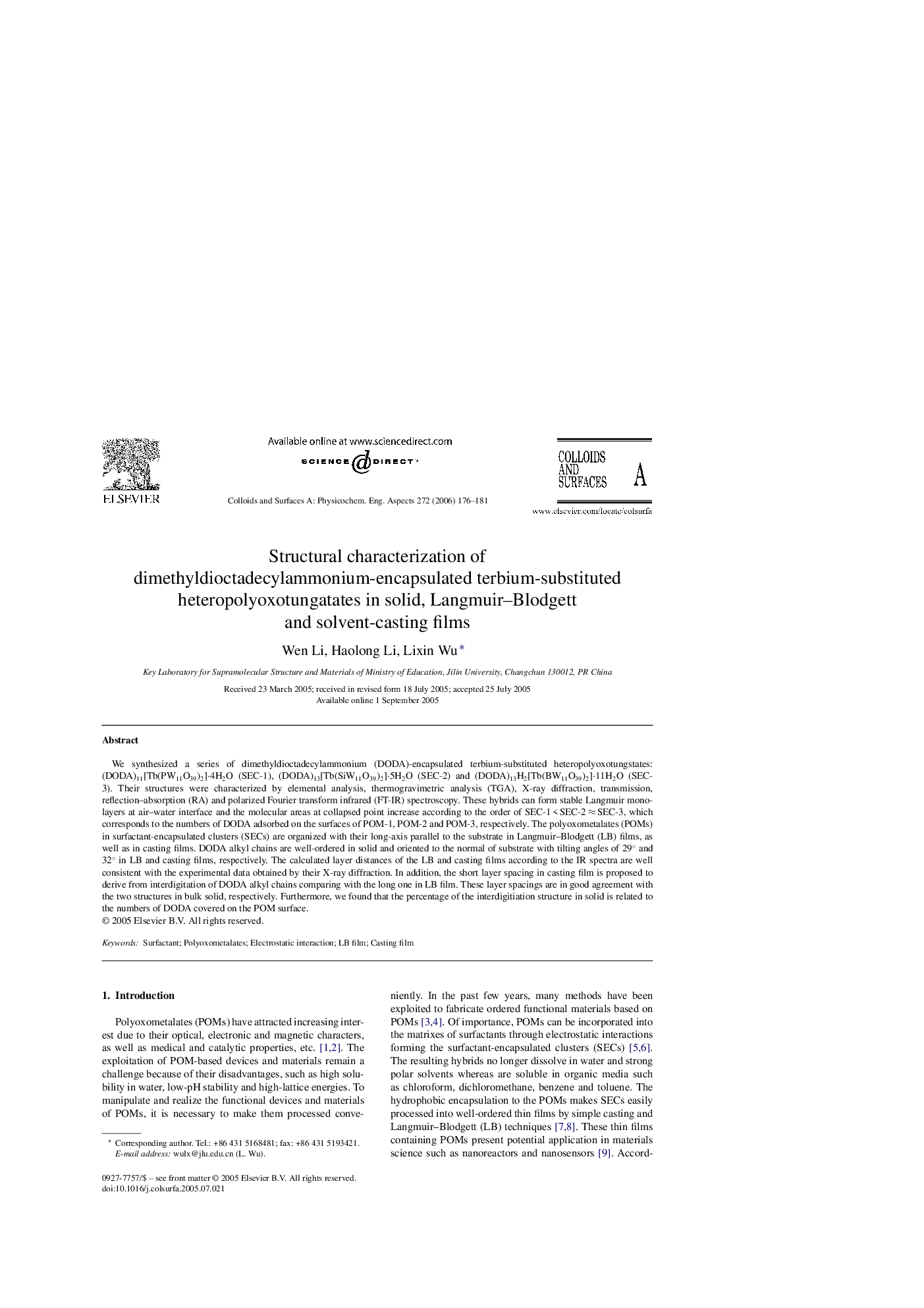| Article ID | Journal | Published Year | Pages | File Type |
|---|---|---|---|---|
| 598611 | Colloids and Surfaces A: Physicochemical and Engineering Aspects | 2006 | 6 Pages |
We synthesized a series of dimethyldioctadecylammonium (DODA)-encapsulated terbium-substituted heteropolyoxotungstates: (DODA)11[Tb(PW11O39)2]·4H2O (SEC-1), (DODA)13[Tb(SiW11O39)2]·5H2O (SEC-2) and (DODA)13H2[Tb(BW11O39)2]·11H2O (SEC-3). Their structures were characterized by elemental analysis, thermogravimetric analysis (TGA), X-ray diffraction, transmission, reflection–absorption (RA) and polarized Fourier transform infrared (FT-IR) spectroscopy. These hybrids can form stable Langmuir monolayers at air–water interface and the molecular areas at collapsed point increase according to the order of SEC-1 < SEC-2 ≈ SEC-3, which corresponds to the numbers of DODA adsorbed on the surfaces of POM-1, POM-2 and POM-3, respectively. The polyoxometalates (POMs) in surfactant-encapsulated clusters (SECs) are organized with their long-axis parallel to the substrate in Langmuir–Blodgett (LB) films, as well as in casting films. DODA alkyl chains are well-ordered in solid and oriented to the normal of substrate with tilting angles of 29° and 32° in LB and casting films, respectively. The calculated layer distances of the LB and casting films according to the IR spectra are well consistent with the experimental data obtained by their X-ray diffraction. In addition, the short layer spacing in casting film is proposed to derive from interdigitation of DODA alkyl chains comparing with the long one in LB film. These layer spacings are in good agreement with the two structures in bulk solid, respectively. Furthermore, we found that the percentage of the interdigitiation structure in solid is related to the numbers of DODA covered on the POM surface.
